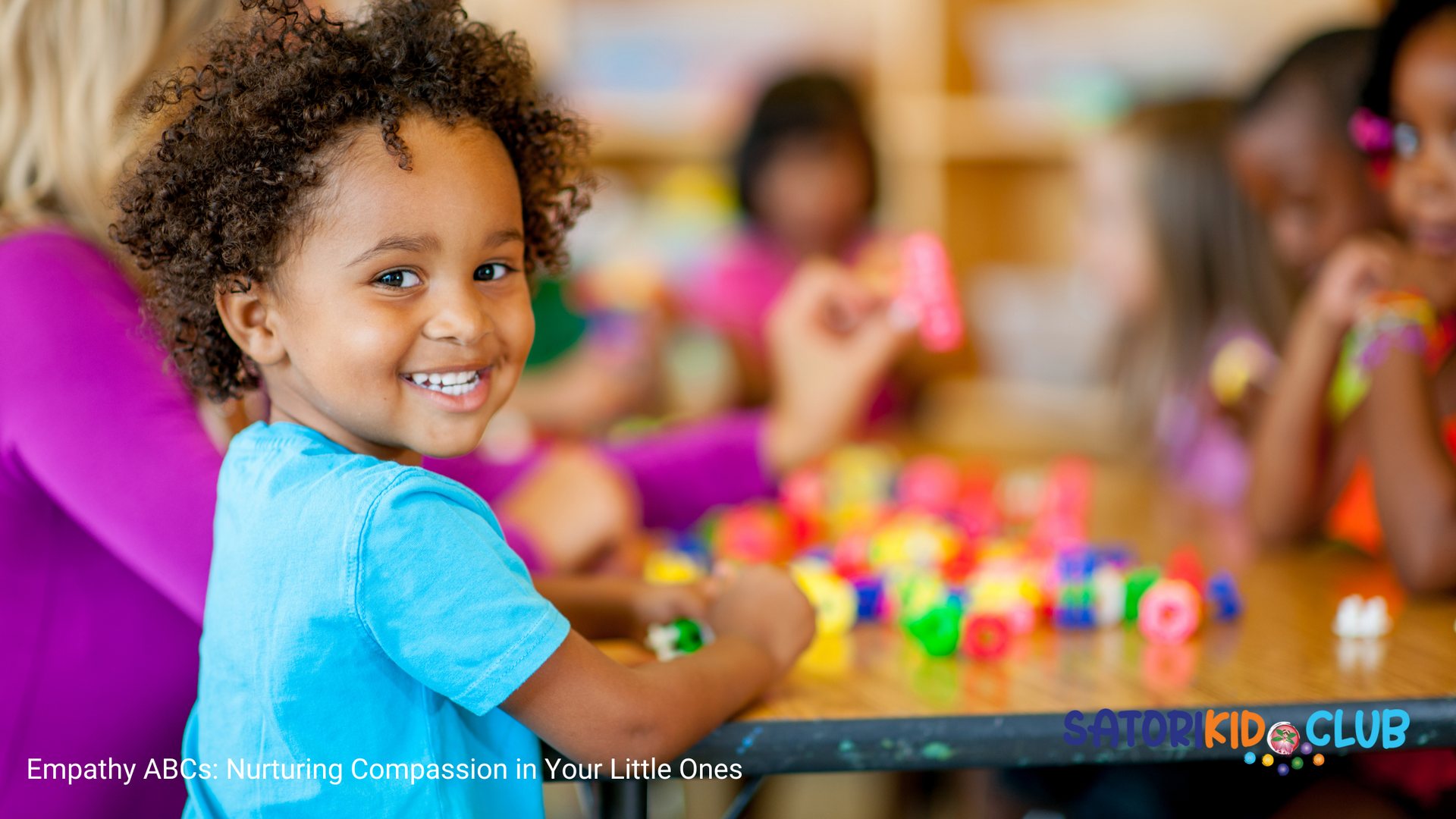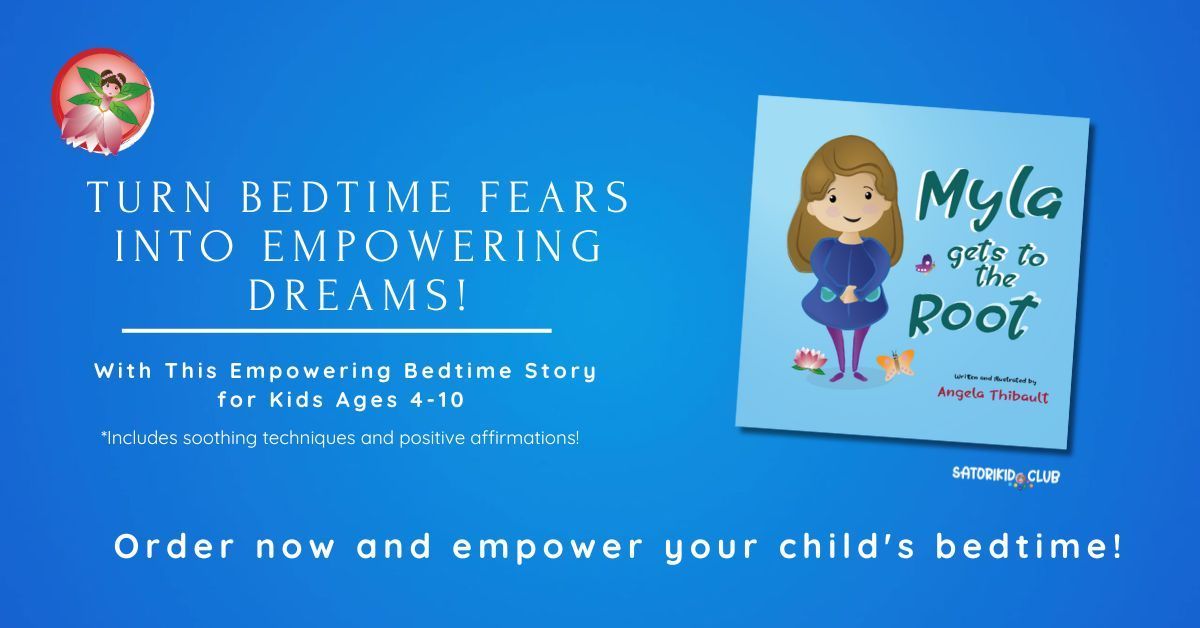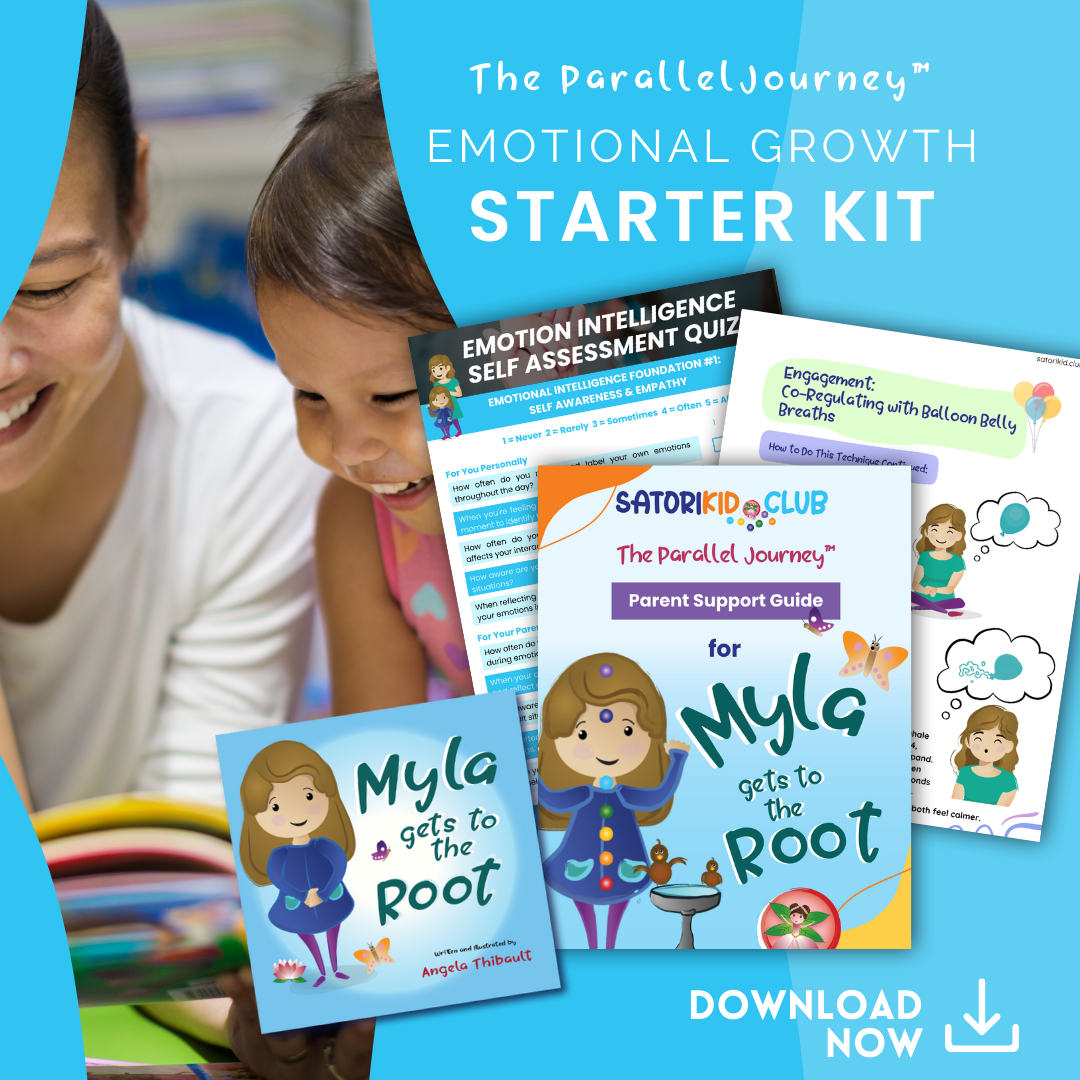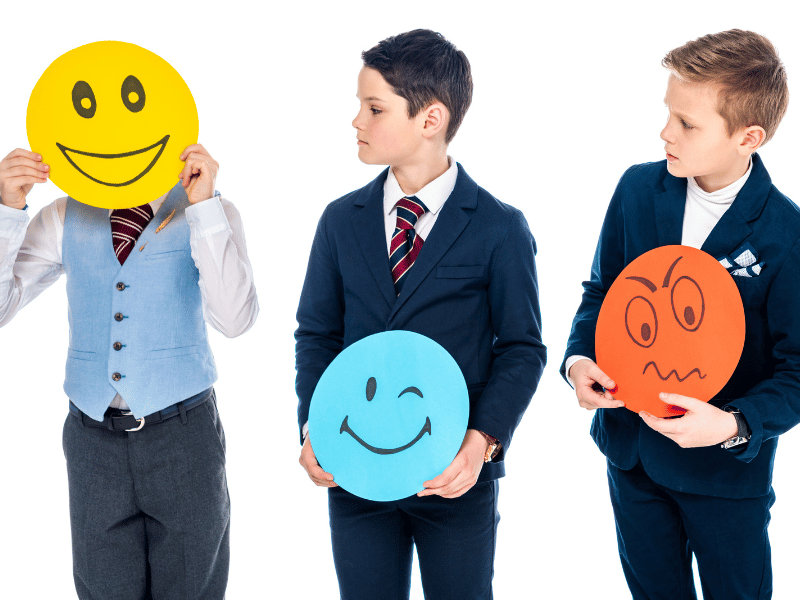Start your journey here
Empathy ABCs: Nurturing Compassion in Your Little Ones
All activities should be supervised by an adult.
Share

How you can instill empathy in my child from a young age.
In the grand tapestry of parenting, few threads are as vital and enriching as the one woven with empathy. As parents, we embark on a journey of molding not just the physical beings of our children but also the very essence of their hearts. In this pursuit, empathy emerges as a guiding light, illuminating the path toward compassionate, understanding, and emotionally intelligent individuals. So, let's explore the Empathy ABCs—the foundational principles that lay the groundwork for nurturing compassion in your little ones.
A is for Awareness:
The first step in fostering empathy in your child is cultivating awareness—both of their own emotions and the feelings of others. Emotional intelligence begins with recognizing and understanding one's own feelings. Encourage your child to express their emotions freely, creating a safe space where joy, sadness, anger, and fear are all welcomed guests.
Narrate your emotional experiences to them, explaining why you might be happy, sad, or frustrated. By doing so, you not only model emotional expression but also provide a framework for them to comprehend the rich tapestry of human emotions.

B is for Boundaries:
Empathy is a delicate dance that requires a harmonious balance between understanding others' emotions and maintaining personal boundaries. Teach your child that while it's essential to empathize with others, it's equally important to establish and respect their own emotional boundaries.
Role-playing scenarios can be a fun and effective way to instill this concept. Pretend play, where they take turns being different characters, allows them to experience firsthand the dynamics of emotions and boundaries.
C is for Connection:
At the heart of empathy is connecting with others on a profound emotional level. Encourage your child to connect not only with their peers but also with a diverse range of people. Expose them to different cultures, perspectives, and life experiences. This not only broadens their understanding of the world but also lays the foundation for a more empathetic worldview.
Family traditions and rituals can be powerful tools for building connections. When experiences are shared, it creates a sense of unity and belonging, reinforcing that we are all interconnected in the human experience.

D is for Dialogue:
Open and honest communication is the cornerstone of empathy. Create a home environment where your child feels comfortable expressing their thoughts and feelings. Establishing a habit of regular family discussions fosters an atmosphere of trust and understanding.
Engage your child in conversations about empathy itself. Ask them questions like, "How do you think your friend felt when this happened?" or "Can you tell me about a time when you felt really happy for someone else?" These reflective dialogues help them internalize the concept of empathy and its significance in their relationships.
E is for Example:
Children are keen observers, absorbing the world around them like sponges. As parents, we are the primary architects of their moral and emotional foundations. Modelling empathetic behaviour is perhaps the most impactful way to teach it.
Demonstrate empathy in your everyday actions. Whether it's comforting a friend in distress, volunteering as a family, or simply showing kindness to strangers, your child learns from watching you navigate the intricate dance of human connection.
F is for Fictional Friends:
Stories have an unparalleled ability to shape the moral compass of a child. Introduce them to books and movies that highlight the importance of empathy. Choose narratives that explore characters facing challenges, making difficult decisions, and, ultimately, exhibiting compassion.
After reading or watching, engage in discussions with your child. Ask questions like, "How do you think the character felt in that situation?" or "What would you have done if you were in their shoes?" This not only enhances their comprehension of empathy but also encourages critical thinking.

G is for Gratitude:
Gratitude is intertwined with empathy, as both stem from an appreciation of the experiences and emotions of oneself and others. Encourage your child to cultivate gratitude by reflecting on the positive aspects of their lives.
Create a gratitude journal where you and your child jot down things you're thankful for daily. This practice not only fosters a sense of appreciation but also helps them recognize the blessings in their lives and empathize with those who may be less fortunate.

H is for Helping Hands:
Empathy is not just a sentiment but a call to action. Teach your child the transformative power of kindness through small acts of service. Engage in community service projects together, whether it's volunteering at a local shelter, participating in a neighbourhood clean-up, or simply helping an elderly neighbour.
In these moments, your child not only learns the value of giving back but also experiences the joy that emanates from making a positive impact on the lives of others.

I is for Inclusivity:
Empathy thrives in an environment that celebrates diversity and Inclusivity. Guide your child to appreciate and respect differences in culture, race, religion, and abilities. Expose them to various perspectives and traditions, fostering a sense of openness and acceptance.
Celebrate cultural holidays, attend diverse community events, and engage in conversations about the beauty of our differences. By doing so, you lay the groundwork for a child who not only understands but embraces the rich tapestry of humanity.

J is for Journeys of Others:
Explore the stories of real people who have overcome adversity, showing resilience, kindness, and empathy in the face of challenges. Whether it's historical figures, community heroes, or even family members, share these narratives with your child.
Discussing these stories not only provides valuable life lessons but also inspires your child to see the potential for empathy in every corner of the world.
K is for Kindness Rocks:
Transform empathy into a tangible and creative experience by painting kindness rocks together. These small, decorated rocks can be placed in public spaces for others to find. The simple act of creating and sharing these rocks becomes a metaphor for the ripple effect of kindness.
Encourage your child to think about the person who might find the rock and how it could brighten their day. This hands-on activity makes the abstract concept of empathy concrete and meaningful.

M is for Mindfulness:
In the chaos of daily life, mindfulness provides a sanctuary for cultivating empathy. Introduce your child to simple mindfulness practices, such as deep breathing or guided imagery. These techniques help them develop emotional regulation and attunement.
Create a calming corner where your child can retreat when feeling overwhelmed. This designated space serves as a reminder that empathy starts from within and requires a centred and mindful approach to the world.

N is for Nature's Lessons:
The great outdoors serves as a powerful classroom for empathy. Take nature walks with your child, observing the wonders of the environment. Discuss the interconnectedness of all living things and the fragility that sustains life on Earth.
Engaging with nature fosters a sense of stewardship and empathy for the planet. Teach your child the importance of caring for the environment, instilling in them a responsibility not just to humanity but to the entire ecosystem.

O is for Others First:
Encourage your child to consider the needs and feelings of others before their own. Simple acts of putting others first, such as letting a friend go first in line or sharing toys without hesitation, instill the values of generosity and selflessness.
Create scenarios where your child can practice considering others' needs, reinforcing that empathy involves understanding and actively responding to the emotions of those around them.

P is for Perspective-Taking:
Empathy flourishes when one can step into another's shoes and see the world from their perspective. Encourage your child to practice perspective-taking by asking questions like, "How do you think your friend felt in that situation?" or "What would it be like to be in their position?"
Reading books or watching movies from different cultural or personal perspectives enhances this skill, fostering a broader and more nuanced understanding of the human experience.
Q is for Questioning:
Curiosity is a powerful ally in the journey of empathy. Encourage your child to ask questions about the feelings and experiences of others. This not only deepens their understanding but also signals to others that their emotions are valid and essential.
Create a culture of curiosity in your home, where questions are welcomed, and discussions about feelings are encouraged. This open dialogue not only nurtures empathy but also strengthens the parent-child bond.

R is for Reflection:
Foster a habit of reflection in your child by regularly discussing their actions and their impact on others. Ask questions like, "How do you think your friend felt when you shared your snack?" or "What could you do differently next time to make someone feel better?"
Reflection builds self-awareness and reinforces the connection between actions and emotions, laying the groundwork for a more empathetic and considerate child.
S is for Storytelling:
Stories are timeless vehicles for imparting moral lessons and values. Create or choose stories that center around empathy, kindness, and understanding. Narratives that feature characters navigating complex emotions and relationships provide valuable lessons in a format that resonates with children.
Engage your child in discussions about the stories you read together, exploring the characters' emotions and drawing parallels to their experiences.
Our Myla book series, which explores the world of chakras, is a great place to start! These books introduce emotions and self-regulation skills through chakra affirmations and breathing work.

U is for Understanding Emotions:
To empathize with others, your child must first understand and identify many emotions. Use emotional intelligence games or activities to help them recognize facial expressions, body language, and vocal tones associated with different emotions.
Foster an environment where it is safe for them to express their emotions through art, writing, or verbal communication. This practice not only enhances their emotional vocabulary but also deepens their capacity for empathy.

V is for Values Exploration:
As your child grows, they will begin to form their own set of values. Encourage them to explore and articulate what matters most to them. Discuss the values that underpin acts of kindness and compassion, helping them connect their actions to a broader sense of purpose and meaning.
Creating a family values chart together provides a visual representation of the principles that guide your household, reinforcing the importance of empathy in your shared beliefs.
W is for Walk in Their Shoes:
Expand your child's empathetic horizons by exposing them to various life experiences. Visit museums, cultural events, or historical sites that provide insights into different ways of life. Encourage discussions about the challenges and joys faced by people around the world.
This immersive approach not only broadens their understanding but also nurtures a global perspective that transcends cultural and geographical boundaries.
X is for eXemplary Role Models:
Provide your child with positive role models who exemplify empathy in action. Whether it's friends, family members, or community figures, showcase individuals who prioritize kindness, understanding, and compassion.
Discuss these role models with your child, highlighting specific acts of empathy and the positive impact they have on others. This not only reinforces the value of empathy but also provides real-life examples for your child to emulate.
Y is for Yes to Differences:
Empathy flourishes in an environment that embraces and celebrates differences. Teach your child to say "yes" to diversity in all its forms. Encourage them to appreciate the uniqueness of each individual, fostering an attitude of acceptance and inclusion.
Engage in activities that explore different cultures, traditions, and perspectives. This not only broadens their worldview but also lays the foundation for a more empathetic and open-minded outlook on life.

Z is for Zero Judgment:
Create a judgment-free zone where your child feels secure expressing their thoughts and feelings. Avoid labelling emotions as "good" or "bad," emphasizing that all feelings are valid and worthy of acknowledgment.
By fostering an environment free of judgment, you create a safe space for your child to explore the nuances of empathy without fear of criticism, allowing their compassionate nature to blossom.

In the grand tapestry of parenting, the Empathy ABCs serve as the vibrant threads that weave a foundation of compassion, understanding, and kindness in the hearts of your little ones. As you embark on this journey, remember that empathy is not a destination but a lifelong exploration. This continuous evolution shapes not only the individuals your children become but also the world they help create.

Angela Thibault
Angela Thibault is a mother of two, a passionate children’s author, and the founder of Satori Kid Club and The Parallel Journey™.







